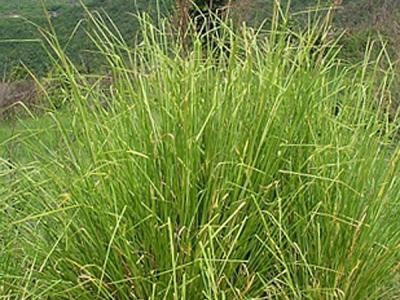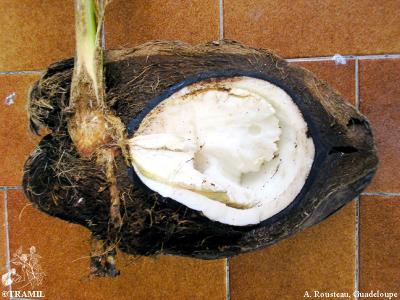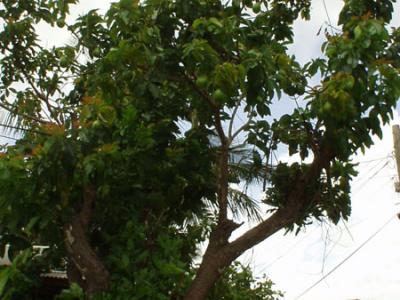(In territories with significant traditional TRAMIL use)
Guatemala:
- valeriana
Honduras:
- valeriana
Haiti:
- vetivè
apical bud, decoction, orally2
According to published and other information:
The uses of root decoction against insomnia, nervousness and cough are classified as REC, based on the significant traditional use documented in the TRAMIL surveys, toxicity studies, scientific validation and available published scientific information.
The use of root decoction against abdominal pain, and the use of leaf and root decoction for headache are classified as REC, based on the significant traditional use documented in the TRAMIL surveys and toxicity studies.
The use of apical bud decoction for stomach pain is classified as REC, based on the significant traditional use documented in the TRAMIL surveys, toxicity studies, scientific validation and available published scientific information.
The use of apical bud decoction for urinary infection is classified as REC, based on the significant traditional use documented in the TRAMIL surveys and toxicity studies.
The use of root and entire plant decoction by ingestion and in baths for high temperature (fever) is classified as REC, based on the significant traditional use documented in the TRAMIL surveys and toxicity studies.
Should there be a notable worsening of the patient’s condition, or should symptoms persist for more than 2 days for high temperature (fever) and headache, for more than 3 days for stomach pain and urinary infection, or for more than 7 days for nervousness, seek medical attention.
There is no available information establishing a means of preparation and dosage other than that referred to by traditional use.
Any medicinal preparation must be preserved cold and used within the 24 hours.
1 WENIGER B, ROUZIER M, 1986
Enquête TRAMIL. Service Oecuménique d'Entraide SOE, Port au Prince, Haïti.
2 GIRÓN L, 1988
Encuesta TRAMIL (Costa atlántica). Centro Mesoamericano de Tecnología CEMAT, Guatemala, Guatemala.
3 LAGOS-WITTE S, 1988-89, 1996
Encuesta TRAMIL. Laboratorio de Histología Vegetal y Etnobotánica, Dep. de Biología, Universidad Nacional Autónoma de Honduras UNAH, Tegucigalpa, Honduras.
4 SOLÍS PN, RODRÍGUEZ N, ESPINOSA A, GUPTA MP, 2004
Estudio fitoquímico de algunas plantas TRAMIL con usos en Martinica. Informe TRAMIL. Centro de Investigaciones Farmacognósticas de la Flora Panameña CIFLORPAN, Facultad de Farmacia, Universidad de Panamá, Panamá, Panamá.
5 SHIBAMOTO T, NISHIMURA O, 1982
Isolation and identification of phenols in oil of vetiver. Phytochemistry 21(3):793.
6 WEYERSTAHL P, MARSCHALL H, SPLITTGERBER U, WOLF D, 1997
New cis-eudesm-6-ene derivatives from vetiver oil. Liebigs Ann Chem 8:1783-1787.
7 WEYERSTAHL P, MARSCHALL H, SPLITTGERBER U, WOLF D, 1996
New sesquiterpene ethers from vetiver oil. Liebigs Ann Chem (7):1195-1199.
8 LU Y, 1989
Extraction of khusimol and other components from Vetiveria zizanioides roots. Patent Faming Zhuanli Shenging Gongkai Shuomingshu, 1, 033, 462
9 CÁCERES A, GONZÁLEZ S, GIRÓN L, 1998
Demostración de la actividad antimicrobiana de plantas tramil en base a los usos populares en la cuenca del Caribe. Laboratorio de productos fitofarmacéuticos Farmaya y Facultad de Ciencias Químicas y Farmacia, Universidad de San Carlos, Guatemala, Guatemala.
10 SOLÍS PN, RODRÍGUEZ N, ESPINOSA A, GUPTA MP, 2004
Estudio antimicrobiano de algunas plantas TRAMIL con usos en Martinica. Informe TRAMIL. Centro de Investigaciones Farmacognósticas de la Flora Panameña CIFLORPAN, Facultad de Farmacia, Universidad de Panamá, Panamá, Panamá.
11 GARCÍA GM, COTO MT, GONZÁLEZ CS, PAZOS L, 2000
Potenciación del sueño, del extracto acuoso de las hojas de Vetiveria zizanioides. Informe TRAMIL. Laboratorio de Ensayos Biológicos LEBi, Escuela de Medicina, Universidad de Costa Rica, San Pedro, Costa Rica.
12 GARCÍA GM, COTO MT, GONZÁLEZ CS, PAZOS L, 2000
Potenciación del sueño, del extracto acuoso de raíz de Vetiveria zizanioides. Informe TRAMIL. Laboratorio de Ensayos Biológicos LEBi, Escuela de Medicina, Universidad de Costa Rica, San Pedro, Costa Rica.
13 PAZOS L, COTO T, GONZÁLEZ S, QUIROS S, 2003
Tránsito intestinal, en ratones, del extracto acuoso de la raíz de Vetiveria zizanioides. Informe TRAMIL. Laboratorio de Ensayos Biológicos LEBi, Universidad de Costa Rica, San Pedro, Costa Rica.
14 CAMBAR P, COUSIN L, SANTOS A, ALGER J, 1989
Efecto del extracto acuoso de Chrysopogon zizanioides en la prevención de la producción de úlceras gástricas según el método Shay. Informe TRAMIL. Serie de comunicaciones progresivas. Unidad de Farmacología, Facultad de Ciencias Médicas, Universidad Nacional Autónoma de Honduras, Tegucigalpa, Honduras.
15 PAZOS L, COTO T, GONZÁLEZ S, QUIROS S, 2004
Actividad antiulcerosa en rata, dosis repetidas, del extracto acuoso de cogollos de Vetiveria zizanoides. Informe TRAMIL. Laboratorio de Ensayos Biológicos LEBi, Universidad de Costa Rica, San Pedro, Costa Rica.
16 CAMBAR P, 1996
Efectos broncopulmonares y cardiovasculares de los extractos acuosos de raíz de Vetiveria zizanioides (L.) Nash ex Small en conejos. Informe TRAMIL. Serie de comunicaciones. Facultad de Ciencias Fisiológicas, Universidad Nacional Autónoma de Honduras. Tegucigalpa, Honduras.
17 AMDUR MD, MEAD J, 1958
Mechanics of respiration in unanesthetized guinea pigs. Amer J Physiol, 192(2):364-368.
18 PAZOS L, COTO T, GONZÁLEZ S, 2003
Toxicidad oral aguda en ratones, del extracto acuoso de raíz de Vetiveria zizanioides. Informe TRAMIL. Laboratorio de Ensayos Biológicos LEBi, Universidad de Costa Rica, San Pedro, Costa Rica.
19 PAZOS L, COTO T, GONZÁLEZ S, 2003
Toxicidad oral aguda en ratones, del extracto acuoso de la planta entera de Vetiveria zizanioides. Informe TRAMIL. Laboratorio de Ensayos Biológicos LEBi, Universidad de Costa Rica, San Pedro, Costa Rica.
20 PAZOS L, COTO T, GONZÁLEZ S, 2003
Toxicidad oral aguda en ratones, del extracto acuoso de cogollos de Vetiveria zizanioides. Informe TRAMIL. Laboratorio de Ensayos Biológicos LEBi, Universidad de Costa Rica, San Pedro, Costa Rica.
21 HIRUMA-LIMA CA, SOUZA BRITO AR, 2002
Atividades biológicas do extrato hidroalcoólico das folhas de Vetiveria zizanoides. Informe TRAMIL. Depto. Fisiologia, Inst. Biociências UNESP, Botucatu, SP, Brasil.
22 PAZOS L, COTO T, GONZÁLEZ S, 2003
Irritabilidad dérmica, de piel lesionada en conejos, de planta entera de Vetiveria zizanioides. Informe TRAMIL. Laboratorio de Ensayos Biológicos LEBi, Universidad de Costa Rica, San Pedro, Costa Rica.
23 PAZOS L, COTO T, GONZÁLEZ S, 2003
Irritabilidad dérmica, de piel lesionada en conejos, de raíz de Vetiveria zizanioides. Informe TRAMIL. Laboratorio de Ensayos Biológicos LEBi, Universidad de Costa Rica, San Pedro, Costa Rica.
24 JAIN SC, NOWICKI S, EISNER T, MEINWALD J, 1982
Insect repellents from vetiver oil: I. Zizanal and epizizanal. Tetrahedron Letr 23(45):4639-4642.




